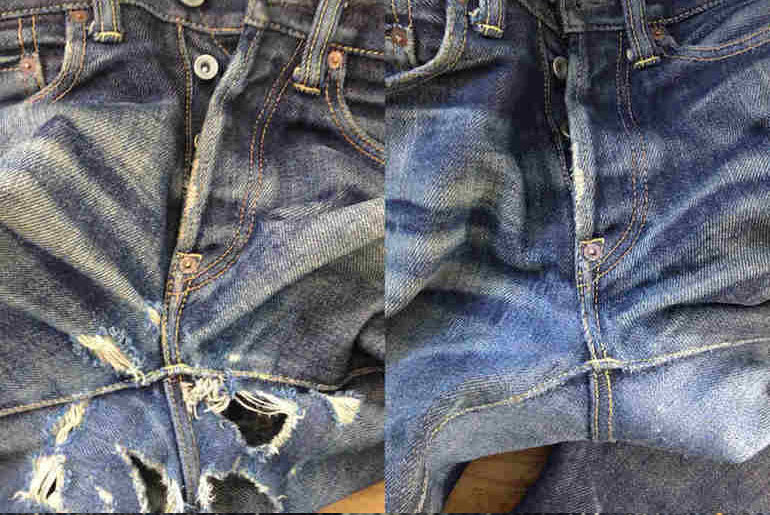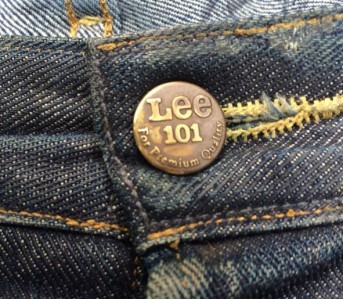Anyone who has worn their denim for a long period of time knows that at some point all that wear takes its toll on the fabric and rips and holes will form. With people investing more money, time and effort into their denim, the need for quality repair services beyond a simple patch has grown. Darning, a repair technique that involves weaving threads back into a hole or rip until there is essentially new fabric woven in, has become the preferred repair method for denimheads. While there are several services available that offer darning, one of the best tailors doing it is Rain Delisle of Darn-It!, Self Edge’s repair and hem shop.
Originally from Boston, Rain got her start after moving to San Francisco several years ago and sewing for various tailors around the Bay Area. While she was working as a contract tailor for Self Edge, she had a chance to meet one of the owners, Kiya Babzani, and found that they shared the similar ideas and goals for expanding Self Edge’s repair services. Quickly, they worked together and grew the repair side of the business into a stand alone tailor shop which is now known as Darn-It!
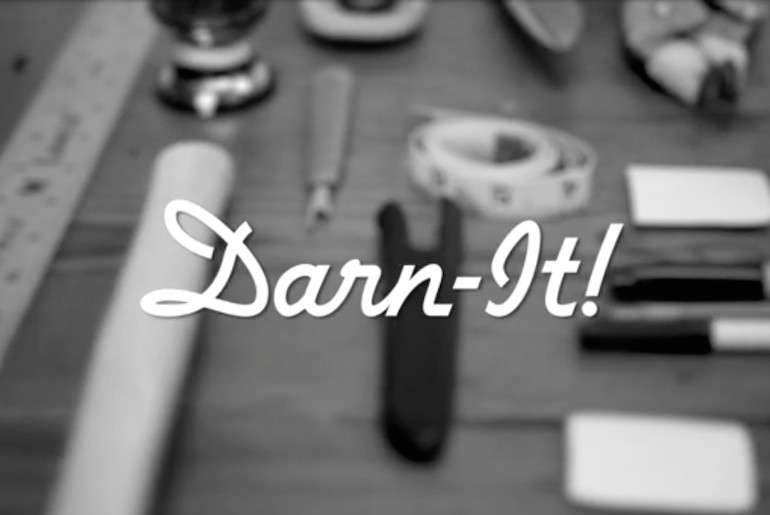
Fast forward two years and the shop, now including a second tailor Alex Lunt, is running at full speed doing several hundred repairs and hems each month. We had a chance to catch up with Rain to find out more about how the whole operation works, the most rememberable and challenging repairs she’s ever done, and some advice when it comes time to bring your denim in for repair.
Heddels: Darning is not a common practice anymore but is considered a superior repair method compared to patching. From your perspective, what aspects of darning makes it your preferred method for repairing jeans?
Rain: Darning is superior because it stabilizes the denim so much more than a patch can. It is the process of essentially weaving together the edges of the hole to create a reinforced area that can withstand more wear. With a patch, you are just covering a hole and creating stress on the places where the patch was sewn, causing weird wear patterns around the patch and premature holes in the newly stressed areas.
With darning, the hole is rewoven and re-integrated into the jean, so it lasts a lot longer. Not to mention, when done correctly, it also looks so much better! I take a lot of care in matching thread color to make an “invisible” repair that blends in with the jean.
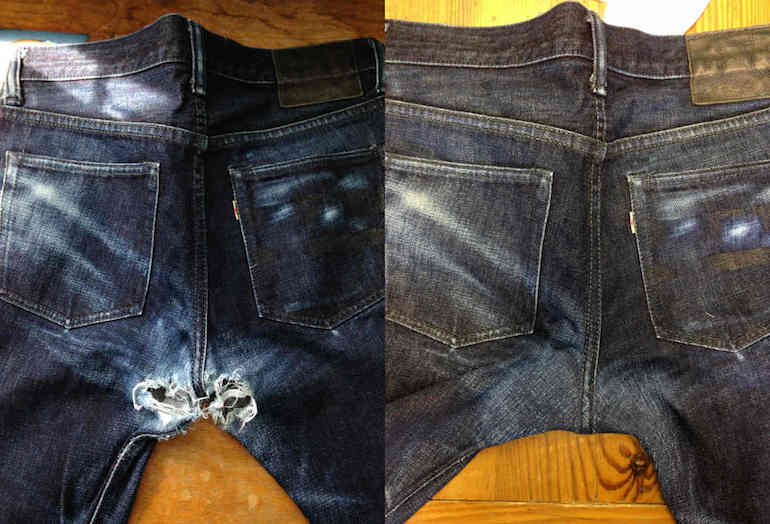
RD: When you first get a pair of jeans, what is the process of getting started on a repair? What machines do you use?
Rain: First I put on the most appropriate KISS album, based on the type of jean I’m repairing :). The next thing I do is assess the areas that need to be repaired and the type of denim it is. Is it heavyweight or thin? Will it need to be stabilized? Are there any seams that need to be undone or old repairs and patches that need to be taken out? Are there areas that just need reinforcement? Do I need to remove hardware to access the place that needs repair?
Most importantly, how can I make sure to address the wear pattern that creates the holes, to prevent future damage from happening? These are the most important questions that I ask myself daily with every pair of jeans I look at, and it is second nature to me to answer all of these before I even begin.
As for machines, I use a 1950’s Singer 47W70 darning machine that I’m attached to the hip with, and a Brother Exedra E-40 single needle. We have a kickpress also for installing rivets.
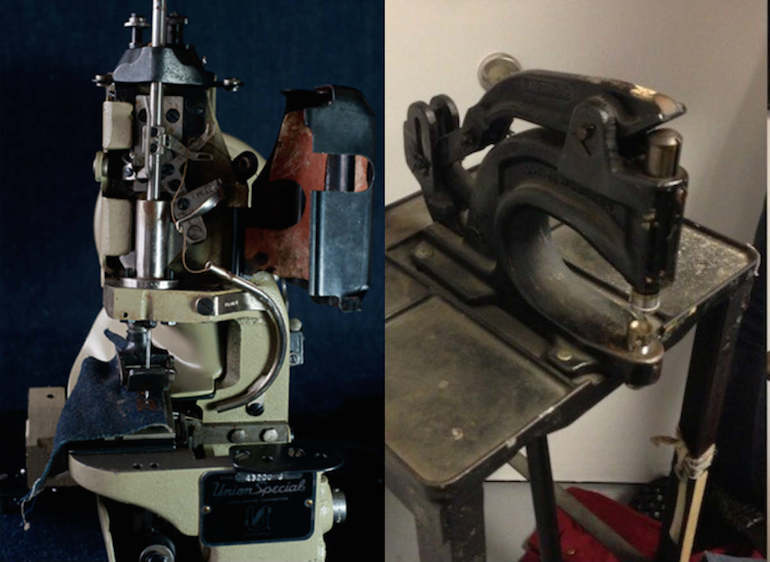
RD: What are some of the craziest jeans you’ve repaired?
Rain: There have been several intense repairs that I have done, but nothing comes close to a pair of Iron Heart 634SR 5th Anniversary. These were hands down the most time-intensive repair I’ve ever done – they were worn so hard. They were actually featured on a Heddels Fade Friday after I repaired them.
Second place goes to a pair of very old 3sixteens that were basically tissue paper from waistband to knee. That was some serious reinforcement, which is almost as time intensive as repairing actual holes, since you have to cover a wider area to prevent further thinning of the fabric.
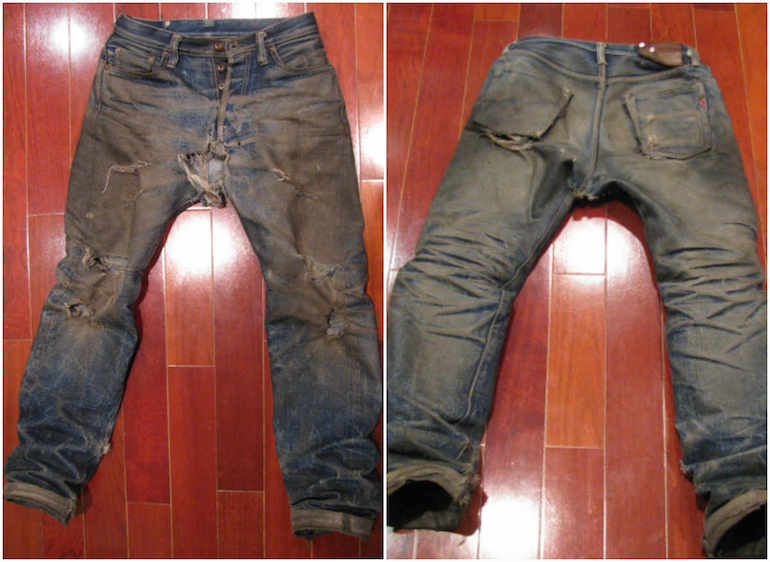
Iron Heart before repair
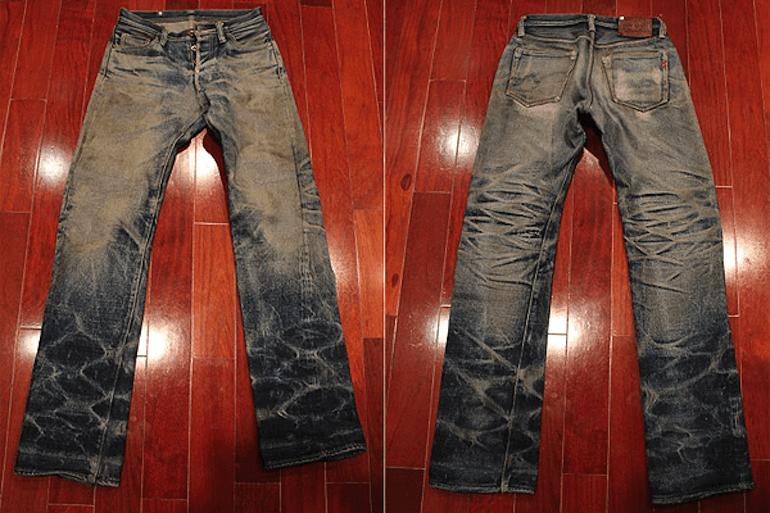
Iron Heart After Repair
RD: A question that gets brought up a lot is when is the best time to get a repair done. Before the hole happens or after? Should people bring jeans in to get reinforcement done to weak spots on the jeans?
Rain: There IS such a thing as too soon. Reinforcing an area too soon results in making the area more prone to ripping unnaturally. Really, you should only bring a jean in to repair when there is a hole beginning to form. Right when the warp threads start to break, that’s when you should bring your jean in. If you wait much longer than that, the hole is going to rip more, and longer than that, and the weft threads break, making the hole grow and warp.
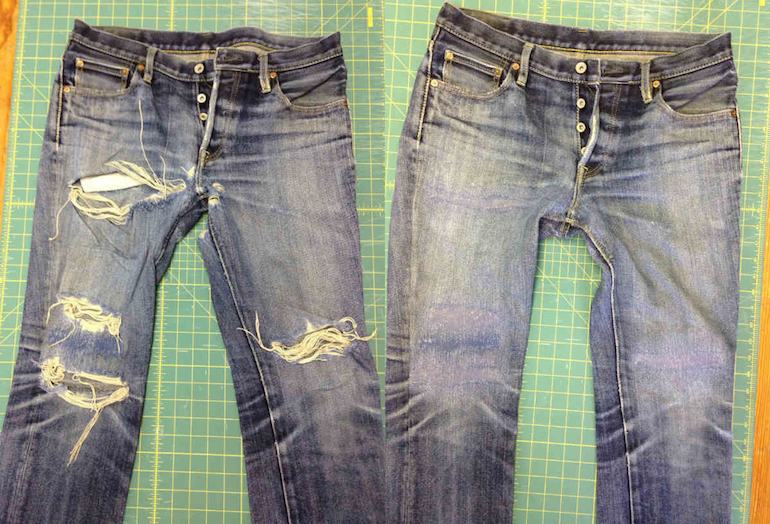
RD: Anything else you want to talk about?
Rain: One of the coolest parts of my job is getting to admire jeans all day. It is really amazing to see the range of wear on some of the best jeans in the world, and they really are all different. I started taking photos of my work a little over a year ago to document some of the repairs I was doing, and began posting them on a blog to track my progress. It started really as a personal experiment, but I was thrilled to find that people were actually interested in seeing my repairs.
It has grown to be a platform for me to show the potential for the life of your jeans, and consistantly generating content really keeps me motivated to push myself to be better. When I began with Self Edge, my knowledge of denim repair was pretty minimal. I was self motivated to learn the best way to repair for me, and I am constantly learning every day. Knowing that I can always improve is what keeps me working hard.
Also, I will say that the most beautiful fades do belong to those jeans which are regularly washed! Wash your jeans! Not only will your friends thank you for not smelling gross, but washing your jeans regularly prevents premature rips! The dirt on your denim permeates the fibers making it brittle and more easily prone to breakage. Also, your jeans will fade to shades of brown, instead of a range of beautiful blues and grays. And it’s also kind of gross, right? Also, I will only work on clean jeans, so don’t even think about sending them my way until you’ve washed them!
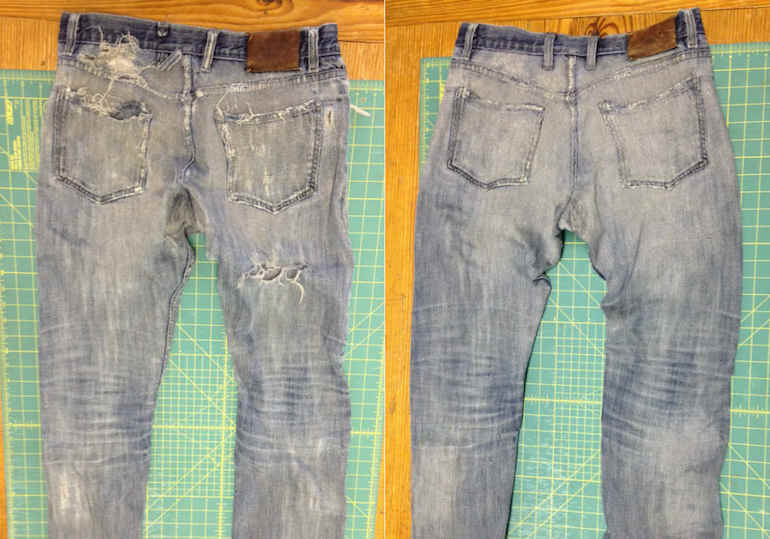
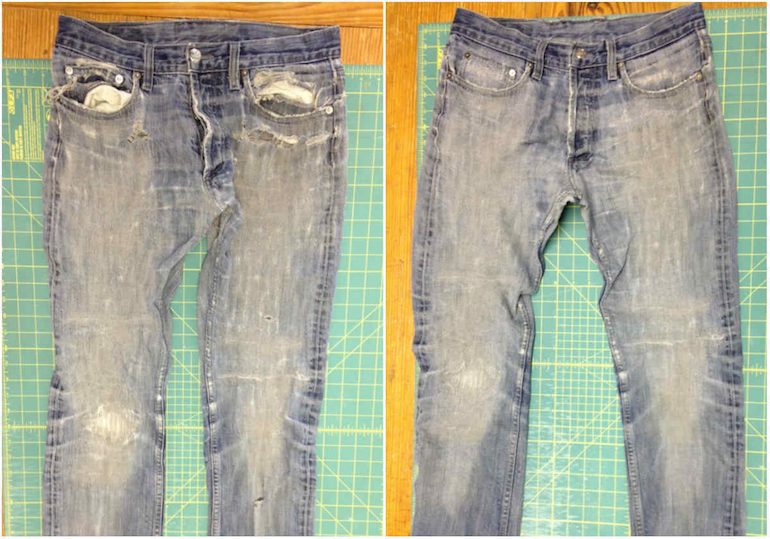
Head on over to Rain’s blog where she documents her various repairs. Currently, Self Edge does not accept any mail in repairs at any of their locations. More information can be found on their website.

